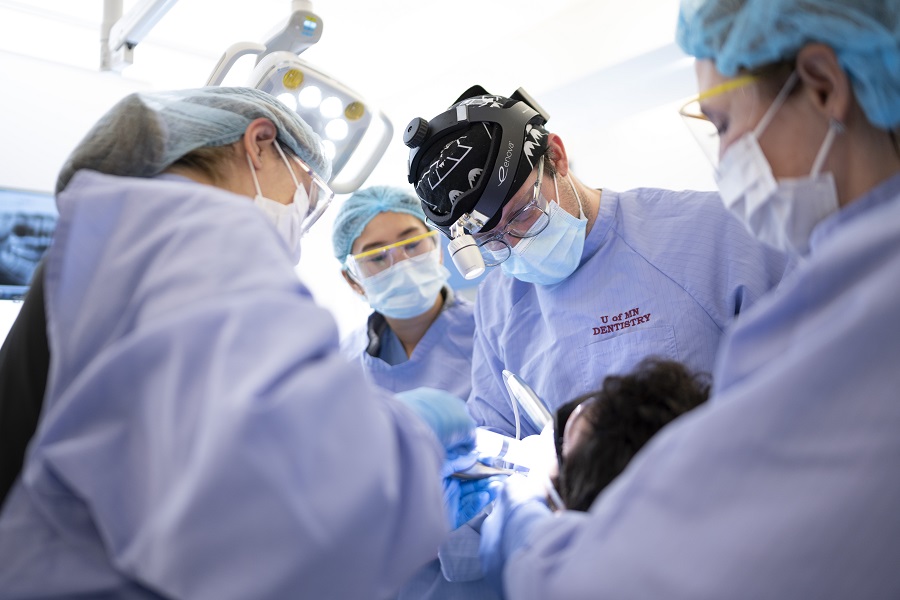Infection
First-of-its-kind splatter study examines infection control during oral surgery
A first-of-its-kind study from the University of Minnesota School of Dentistry examined the patterns of splatter contamination created by rotary instruments and irrigation during oral surgery. This study is the first to examine rotary instrumentation splatter created during oral surgery procedures, and its findings provide several key suggestions for the future of oral surgery and improving safety measures for both providers and patients.
The study was published in Clinical Oral Investigations.
The study involved an experiment on manikins — patient simulators — in the University of Minnesota Oral and Maxillofacial Surgery operatories. Researchers simulated the surgical extraction of four molars in different quadrants with one operator and one assistant with 4 different combinations of operations: saline with a self irrigating drill, hydrogen peroxide with a self irrigating drill, saline with hand irrigation or hydrogen peroxide with hand irrigation.
52 procedures were completed and splatter was collected on glass fiber prefilters, which were allowed to dry before being photographed under UV Light.
The study found:
- The most splatter occurred on the patient’s chest, followed by the assistant’s face shield. The operator’s face shield was also splattered, as were face masks and corner of the operatory.
- The difference between assistant irrigation and self irrigating drills was marginally significant, but found that using hydrogen peroxide as an irrigant instead of saline increased the area of droplet splatter.
“To finally have evidence on the impact of our use of irrigation is very important for the future of our field,” said Rachel Uppgaard, a clinical associate professor in the School of Dentistry and lead author on the study. “We can’t do surgery without it, but now we know more about the patterns generated and can make decisions about our clinical practice that are evidence-based.”
While hydrogen peroxide rinses have been used throughout the COVID-19 pandemic as a pre-procedural rinse, this study is the first to report an enhancing effect of the hydrogen peroxide irrigant on the formation of splatter and suggest that hydrogen peroxide actually increases the risk of spreading droplets when it’s used as an irrigant.
“With the implication that hydrogen peroxide may not be not a suitable solution as a pre-procedure rinse for dental procedures, it could change the pre-existing ideas about using hydrogen peroxide to prevent COVID-19 in patient clinics,” said Boyen Huang, an associate professor in the School of Dentistry and co-author on the study.
The study also offers important insights for the use of personal protective equipment in oral surgery — given the high level of splatter on the operator and assistant’s face shields, practitioners may consider continuing to use face shields.
The authors suggest further approaches include additional studies of the effects of irrigants and irrigation methods on viral load and surface stability of viruses and testing of frequently-touched locations.
-30-
About the School of Dentistry
The University of Minnesota School of Dentistry advances health through scientific discovery, innovative education and the highest-quality care for all communities. As the state’s only dental school, the School of Dentistry educates the next generation of oral health professionals and is a resource to five states for dental education and consultation. Of Minnesota’s practicing dentists, 72 percent are graduates of the dental school. Through its clinics, the School of Dentistry also sees more than 156,000 patient visits each year. Learn more at dentistry.umn.edu.

